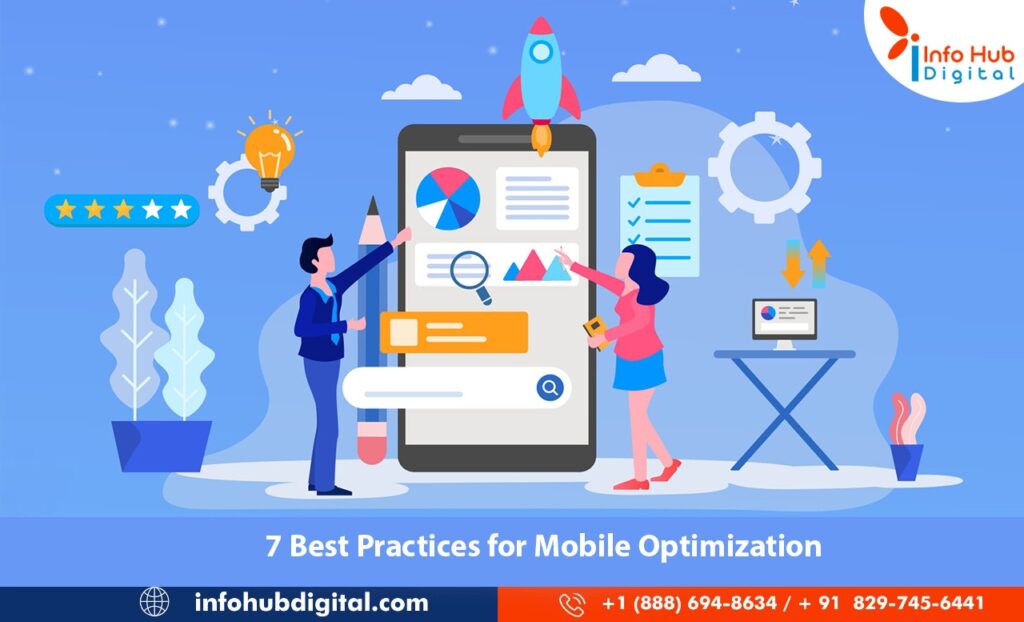Everyone has a mobile device in this age of cellphones and small screens. How to make your website mobile-friendly and pleasurable for customers? Creating a user experience that is fluid, seamless, and comfortable is important to make sure you tap all customers, including the mobile users. Customers should find it satisfying, so they’ll stay longer and explore your website in-depth. Is your conversion rate taking a hit because your website is not optimized for mobile phones? Here’s a rundown of the top mobile optimization best practices that will improve user experience and conversions.
Begin with Responsiveness
The term “responsive” will be familiar to WordPress users. The responsiveness of the themes is frequently the first thing they’ll tout. It’s almost become a must for all new themes. Responsive design is based on recognizing a visitor’s screen size and dynamically adjusting spacing, picture size, and other elements to fit. Rather than creating a new website for the iPhone 10, S7 Edge, or any other new device, it just recognizes the resolution and makes changes using fluid grids and creative CSS.
Easy Access to Homepage
Customers shouldn’t have to strain to get to the homepage repeatedly pressing the back button. This will simply add to their frustration and may deter customers from buying a product. Rather, you should structure your store so that consumers can return to the site with a simple tap. So a quick homepage link will be helpful.
Coding Cleanup
The second most crucial step is to improve your page speed by optimizing your code. This is vital for every web programmer to understand, but it’s even more so on mobile. Consumers of personal computers are more tolerant, but you only have a limited amount of time to appease mobile users. If your site takes too long to load, the visitor may not want to stick around for long.
This can be accomplished in a variety of ways. There’s a lot of work to be done, from lowering image size to clipping away extra HTML, to streamlining demanding scripts. It is possible to accomplish it yourself, albeit it may necessitate some coding changes.
Simple Swiping
Swiping is another typical approach for shoppers to browse an e-commerce store, in addition to tapping on elements. As a result, you’ll need to optimize for this as well. When a person swipes with their thumb, for example, it should seem natural and smooth. Although this may appear to be a tiny point, it will make a major difference and give mobile users a far better experience.
3 Layered Content
On a mobile site, customers are more likely to get lost than on a desktop version of the website. They click on one link, followed by another, and so on, and eventually they lose track of where they are. This is not good for your customers because it makes finding everything they want and checking out, more complicated. It is also detrimental as it impacts the conversion rate.
Creating simply three levels of content on your e-commerce site is an efficient answer to this problem. As a result, this is one of the mobile SEO best practices that you should follow. Remember, more the stages a consumer has complete to get from the landing page to the payment page, the more annoying it will be for them. Not only that, but the likelihood of them converting, decreases as well. Following the three-layer plan simplifies and improves customer experience while also increasing your ultimate conversion rate.
Shorten the Process
Most people using mobile phones to browse the internet have little no patience, so it’s crucial to get right to the point. As you build your site, consider the fact that majority will be browsing it on a mobile device rather than a desktop computer. Consider why people are browsing on a mobile device rather than a computer or a laptop, and serve them material that is appropriate for their device and location. It will be much appreciated by your visitors, and give them a pleasurable shopping experience while on your website.
Use Analytics to Customize
Using Google Analytics, you can monitor which search terms and platforms are sending traffic to your site. You can take advantage of this. Google Analytics provides a wealth of information with which you can use to adjust your website to the needs of your customers.
These are a few best practices for optimizing your website for mobile devices and improving overall usability. Don’t lose visitors due to a website that is poorly designed, slow, or unresponsive. Get to work on improving it, and watch as visitor happiness soars. You can program it to display varied versions of your site’s pages depending on what people are searching for and where they’re browsing from. Info Hub, a digital marketing agency is equipped with sound technical knowledge to make your website mobile-friendly, so that you continue to make profits with more conversions. Our team can help create responsive websites that offer a delightful experience while browsing, ensuring you do not lose your customer base.
Read More Blogs: Facebook Advertising: New Features and Opportunities for Brands







